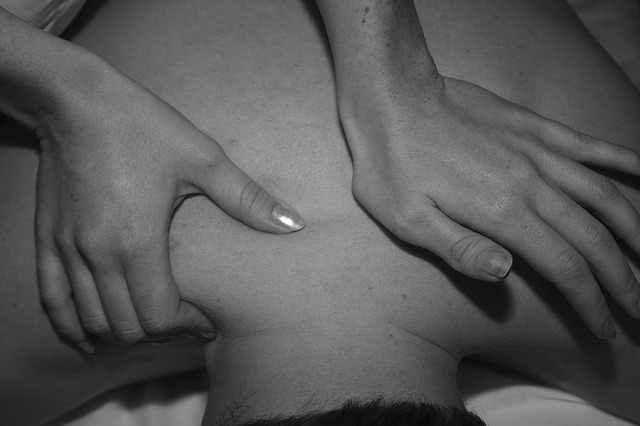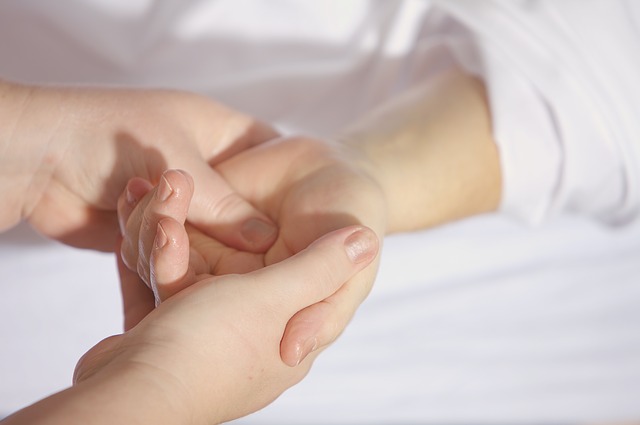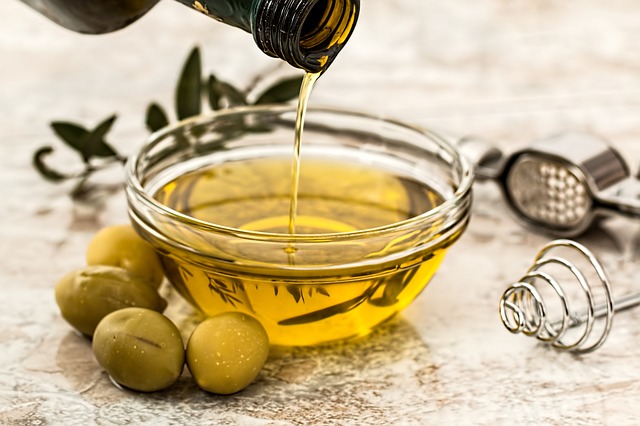Blog
Rehabilitating Herniated Discs
In the pursuit of rehabilitating your herniated disc, we emphasize a straightforward and practical approach. Our primary objective is to assist you in managing your condition, with a primary focus on alleviating pain. While an initial period of rest may be advisable, it’s crucial to recognize that your muscles require consistent conditioning to facilitate a proper recovery. Exercise plays a pivotal role in complementing chiropractic care as we work together to restore your full health.
In our care, you can expect chiropractic adjustments aimed at restoring joint mobility and hands-on treatments that enhance blood circulation to the affected area, promoting the healing process. However, what can you do in the interim to contribute to your own recovery?
- Start small with simple stretches that lengthen restrictive muscles, improving muscle tone and range of motion.
- Improve core muscles: trunk muscles, abdominals, and pelvic stabilizing muscles are all important for sharing the burden of your body’s weight with the lumbar vertebrae.
- Leave the couch behind. In the early stages of your recovery, focus on light aerobic exercise: walking or swimming are good places to start. Only go for as long as you feel comfortable, and then gradually increase your time each day.
The key takeaway from this message is that a diligent commitment to exercise is integral to your complete recovery and the long-term health of your back. To develop a dynamic and tailored strategy for rehabilitating your herniated disc, we encourage you to contact our office and schedule an appointment today. We’re here to guide you every step of the way towards a healthier, pain-free future.
When Running
If you have been swept off your feet and into the running revolution, we hope you will pay attention to your form as you go. Proper posture while running is one of the easiest ways to prevent injury to your spinal joints.
Our number one tip is to vary your running surfaces: running on concrete is incredibly hard on the shock-absorbing structures of the body, and it will cause them to degrade very quickly as opposed to running on softer surfaces.
Focus on posture: fight the urge to let your head drop when tired.
- Keep your head centered above your spine and face forward; the rest of your body will follow this example.
- Pay attention to your shoulders and make sure they stay relaxed. If you feel them tightening, take a break and shake out the tension.
- Your hips are your center of gravity. Staying upright prevents your pelvis from tilting forward, which is a sure way to cause lower back pain.
Much of running is unconscious- as you fall into a rhythm, it is easy to forget to stay upright. If the aftermath of a run sees you nursing a tender back or tight muscles, give our office a call. We will assess the state of your spine and see if repetitive trauma is causing damage to the structures and muscles of your back.
Vitamin D: Free for a Limited Time
Vitamin D: one of the most important nutrients in the human diet. From the chiropractor’s perspective, vitamin D is essential because of its contribution to bone density and nervous system regulation. In the summer, it is abundant and free of charge: the sun is our most significant source of vitamin D. We simply need to sit outside and our body will naturally produce it when exposed to direct sunlight.
Some quick benefits of vitamin D
- Regulates absorption of calcium and phosphorous
- Helps bones and teeth develop properly.
- Helps the immune system function
- Helps people lose weight
- Fights depression and disease
Recommended intake: 10 minutes of pre-sunscreen exposure to the sun per day.
Intake by food:
- Sardines
- Egg yolk
- Mushrooms
- Fortified milk or orange juice
- Fortified yogurt
Vitamin D is a super nutrient, but it is also one of those that is sometimes hard to come by. As a result, a high percentage of Americans are chronically deficient in vitamin D. We would like to see everyone take advantage of the summer season to improve their body of health. We want to help you in this endeavor by helping you turn nutrition, exercise and chiropractic care into tools you can use to prevent the injuries that come with aging.
Give our office a call to schedule an appointment today.
Hydrating for Joint Health
I have demonstrated the importance of staying hydrated for overall well-being. Now let’s look at hydration from the point of view of someone suffering from joint pain. There are hundreds of proffered remedies on the web, in medical journals, at the doctor’s office, or in the health food store. But one that all experts should universally agree upon is the importance of hydration for joint health. However, it is often overlooked as a part of a health plan to deal with joint pain and stiffness.
Joint supplements often contain a mix of carbohydrate and protein complexes that nourish our joints and add to the joint’s innate cushioning, lubrication, and shock-absorbing capacities, which may be eroding with time or due to injury. So yes, joint supplements are good for restoring lost cartilage, but in order for them to truly work, they need to be properly hydrated. We want you to take this seriously!
Coffee, soda, tea, and alcohol all provide trace amounts of hydration; however, they also act as diuretics, meaning they promote more water loss than they truly restore. So cutting out these drinks and replacing them with your daily recommendation of water is a great way to improve your suffering from joint pain and stiffness.
There are many other natural ways you can use your diet to improve joint health, but water is the most simple. With chiropractic care, we can correct the underlying cause of joint dysfunction and help you return to a normal range of motion. From here, we help you to keep up a regime of diet and exercise that will keep your joints healthy long into life. Give our office a call and schedule an appointment today.
Stress Free Gardening
Gardening is supposed to soothe the body, mind, and soul. Of this triad, one is more vulnerable to becoming strained and that is the body: the lifting, twisting, pulling, and sweating involved with a day in the garden can leave a spine imbalanced. The last thing you want to feel while trying to relax and reap the benefit of your garden is a twinge in the lower back or a muscle spasm in the shoulder region. Follow these tips to keep gardening stress-free for the body:
- Warm-up: you may think, really? For gardening? Yes, I am serious: limber up before you garden with a few simple stretches to prevent injury from occurring to overly tight muscles.
- Kneel > bend: many quick tasks in the garden could be done by quickly bending over and pulling. This is often how people, “throw out” their backs.
- Keep your tools and your task in front of you. This helps to avoid the kind of twisting that damages the back.
- Lift the way your mama taught you: that is, with the legs instead of your back.
- Rest: take breaks, preferably before you feel overworked. Find some shade, have a glass of water or two, and admire your work. Then get back to it.
Finally, stay well adjusted: chiropractic adjustments make sure that your spine is aligned and your nervous system is working properly. It’s good for the mind, soul, and body! To make sure your body is optimized for your gardening routine, give our office a call.
Vacation For Health
The summer of 2023 is entering its final chapter and there are school bells ringing in the distance. What better time to take a vacation? Seeking adventure in remote mountains, serenity on tropical beaches, and fine dining in busy cities is what we work so hard for during the year. Often, these journeys require time spent in the cramped confines of an airplane, which can be torture for ailing spines. Airplane seats are rarely designed ergonomically; in fact, we are lucky if they are even designed for comfort! Checking in with a chiropractor before your flight is a good idea, but if you are taking off tomorrow, keep these tips in mind:
- Support your back during the flight: Bring an inflatable pillow, or use the one that is provided on the plane for your head and use it to support the curve in your lower back.
- Posture, posture, posture: just be aware. Long hours in a cramped space often encourage us to tighten, and you will feel it in the muscles of the neck, shoulders and lower back. Keep your posture upright and try to shake out your shoulders every once in a while.
- Move around: break the monotony and release tension from your back by standing up. It’s everyone’s right on the plane, as long as the seat belt sign is off. Don’t be afraid to look goofy, it feels really good to walk a few laps up and down the aisles.
- Stretch: While you’re standing up, you might as well stretch! Anything you can do to lengthen the muscles and keep them limber against t
- Utilize heat and ice: heat stretches the tissues and ice will prevent swelling.
As we put our bodies through so much just to get these few days of respite every year, it would be a shame to spend these weeks in pain. Call your chiropractor and see what we can do to keep your flight comfortable and see you to your destination and back free of pain.
Elongating the Spine
It may sound like the outcome of a medieval torture tool, but we promise it is not! At our office, we focus on spinal elongation to combat the effects of spinal degeneration. As we grow older, the concepts of posture, exercise, and nutrition become as important as they are easy to ignore. Days turning into months of hard work in the office accelerate the natural process of human body degradation. In short, it is something we all share, the reality that our bodies degrade over time. However, it is within your power to limit how much your lifestyle contributes to this degradation.
Spinal degeneration is often accelerated by a myriad of compressive forces: whether it is caused by acute injury, a condition like scoliosis, or poor posture, these antagonists synergize in their effort to create pain, nerve dysfunction, and changes in the natural curvature of the human spine. As compression effectively warps the spine, pain conditions begin to manifest with symptoms including:
- Pain and stiffness
- Numbness in the extremities
- Loss of coordination
- Sciatica
So what are ways of preventing this? Regular exercise, maintaining a healthy weight with diet, and good posture. These three things, as with so many conditions, make up the base of what we can do with our everyday lifestyle to fight spinal compression. At our office, we help by pinpointing where the problem is happening and targeting our treatments for the individual.
- Decompression therapy: focuses on creating negative intradiscal pressure to allow for retraction of bulging disc material.
- Stretching: targeting specific muscle groups in the back to help elongate the spine.
- We help you learn about the condition and institute lifestyle changes that will reduce its severity.
Elongation of the spine is a relatively simple concept as it relates to your health. We use noninvasive methods to get to the root of the problem. For people attempting to improve their suffering from conditions brought on by spinal compression, we are your ally and greatest fan. Tap into our wealth of resources today by calling our office and scheduling an appointment today.
Nutrition for Joint Health
When it comes to strengthening the spine, food is one of your most formidable allies. Nutrition is fun because you can apply it to whatever scale you are thinking about: as chiropractors, we find nutrition to be particularly helpful in managing the health of joints. Joint aching and pain is generally thought of as a problem for the elderly. Recent studies show that it is much more prolific: arthritis, which is a blanket term to include all kinds of conditions that cause joint pain and stiffness, can affect people of all ages. When eating to keep your joints healthy, the focus should be on consuming anti-inflammatory ingredients which strengthen the bones and boost the immune system. This gives you your best shot at keeping your joints healthy into old age.
Joint-friendly foods: what to eat and what to avoid to harness the power of nutrition for your well-being.
Thumbs-up
- Fish oil, derived from fatty fish. Omega-3 fatty acids are great at fighting inflammation that keeps you stiff and sore.
- Low-fat milk helps to fortify bones that grow brittle with age.
- Olive oil lowers the amount of inflammatory enzymes in the body.
Thumbs-down
- Soda
- Foods high in saturated fat actually conduce inflammation. Sorry, bacon.
- Trans-fat and processed sugars contribute to weight gain and inflammation
Also keep in mind, the more you move the less joints will hurt. This can be rather difficult because pain often prevents you from moving, but give our a call and find out how we can reduce the pain you experience and get you moving again to create a positive feedback loop.
Caloric Balance Helps Balance Your Life
Using nutrition to manage weight is a win-win from a wellness chiropractor’s perspective. We want people to realize that nutrition is the single greatest way to maintain a healthy, “feel-great” weight. When it comes to maintaining a healthy weight, it is important to first establish an appreciation for healthy, wholesome ingredients. Reminding yourself of the Caloric Balance Equation can help anyone balance out their diet quickly and it’s really easy to remember: calories in = calories out.
Caloric balance is the balance between calories you consume and calories you burn through bodily functions and physical activity. This is the key to maintaining a stable weight. When we are gaining weight, whether on purpose or not, our bodies are in caloric excess; we are consuming more calories than we are burning.
So, when you set out to tip the scales in favor of losing weight, it requires a coordinated effort between diet and exercise. If you are looking to make changes in your lifestyle to support shedding a few pounds, you can look to our office for help. We can help correct physical limitations that may be preventing you from being active and give you advice and motivation for eating healthier foods.
Food is about attitude: we often eat a lot of what makes us happy; this does not always translate to healthy decisions. The more we put on the plate, the more we eat, so ask yourself this question next time you write a grocery list: are you feeding yourself the healthiest way possible, or simply the most convenient way possible? We look forward to hearing from and helping you on your new path to health.
Chiropractic for Arthritis
Arthritis is the leading cause of disability in the United States. A term that covers more than 100 types of conditions relating to inflammation of the joints, it is responsible for more lost productivity and income than any other condition befalling a person of comparable age. And arthritis prevalence is on the rise: the CDC projects that by 2040, up to 78 million people will be afflicted by one form of doctor-diagnosed arthritis. Long thought of as a disease of the elderly, arthritis is starting to affect people earlier and more often: 2/3 of diagnosed arthritis cases belong to people between the ages of 18 and 65.
We help sufferers of arthritis come to grips with their condition and demonstrate how a proactive approach to the management of the condition can help you live happily despite the pain:
- Routine spinal adjustments are beneficial because they help inhibit the body’s production of inflammatory cytokines.
- Spinal adjustments also help improve range of motion, helping you to get moving which also improves symptoms.
- Nutrition is a large consideration: ingredients like omega-3 fatty acids help limit the body’s inflammatory response.
- Purposeful exercise and stretching can help improve circulation and limit inflammation.
Whether it is due to deskbound jobs, long hours at the computer and cell phone addiction, it is clear that arthritis has become epidemic. While the statistics don’t look great and there is no clear cure as of yet, chiropractic offers reprieve from the pain and stiffness that comes with the different types of arthritis.









